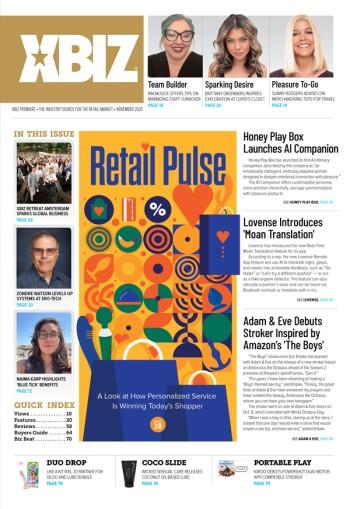Despite the endless advances in personal broadcasting and one-on-one contact through texting and social media — email is still very much alive. Sure, many of us have long since created phantom email addresses to catch the buckets of spam and cryptic messages from robot phishers that constantly deluge our inbox, but still. There’s no denying that a worthwhile email marketing strategy can increase sales and help expand your business.
Let’s start here: an email marketing strategy is not blindly sending frivolous announcements to every customer on your list twice daily without ever measuring results. That’s kind of the email equivalent of carnival barking. Yes, you may attract some attention and catch a few marks, but there are more effective ways to get the job done.
While most everyone in retail knows the value of giving the customer what they want, sometimes that doesn’t translate to their email marketing approach. Why not? Imagine going to a restaurant where the server keeps reciting the steak specials after you already placed your vegan entrée order.
There are several things to keep in mind when developing an email marketing strategy or campaign. As always, define the objective. Will you be selling and/or announcing a new product? Are you trying to generate new long-term subscribers to your mailing list? Are you announcing a new social media channel? Whatever your objective is, that needs to be paired that with your target or those most likely to respond to your message and help achieve your objective.
Many smaller and medium size businesses with modest email lists may only have 1 master list that is used for all messages — there’s nothing wrong with that. However, you will likely find more success when you’re able to segment your customers for more precise targeting of your email messages. For example, a hardcore lesbian customer may not be interested in your sale on ball-cinching cock rings; the female 60-year-old “Fifty Shades of Grey”-head isn’t looking to take advantage of a BOGO on male masturbators, and an announcement about the arrivals of your new ass blasters might not hit the mark with the casual couple who purchased a luxury vibe last week.
It’s not difficult to develop customer segments for your business. In fact, many email marketing services provide multiple options for users to sign up based on their interests. Different categories can be established for your email announcements providing customers the option of signing up for topics that are of interest to them. This eliminates the nuisance of receiving irrelevant emails but more importantly, when you begin to segment your customers you will see an increase in both your open and click equals through rates because you’re giving your customers what they want. Novel concept right? While most everyone in retail knows the value of giving the customer what they want, sometimes that doesn’t translate to their email marketing approach. Why not? Imagine going to a restaurant where the server keeps reciting the steak specials after you already placed your vegan entrée order. So, if you have the means, you should start breaking down your customers into groups or segments in order to pinpoint them for messaging that’s specific to their previous purchases and interests.
It’s also important to keep the focus in your emails clear, consistent and easy to understand. This goes for the subject line, layout and design, messaging and taglines, and of course the money shot — your call to action. We’ve all seen emails that are pushing several different sales, discounts, messages, contests, etc. Guess what? That’s confusing. Remember, people open and close company emails really, really quickly — you’re only going to make them put your brand in the trash box faster if they have no Earthly idea what you’re trying to sell them or what you want them to do. Keep it simple. Of course you can push multiple messages, just be aware of the possibility of diluting your message when you do that — so try to reinforce the same overall message. Let’s say you have a new website and want your customers to check it out. Particularly, you want them to visit the site, sign up for the new company e-newsletter and buy something. You can position this as a “1-2-3” email. “Step 1, log on to mystore.com … Step 2, sign up for our newsletter, to get … Step 3, your promo code for 50 percent off your first order! Log on to mystore.com today!” Yes, it’s technically three messages, but only one call to action and still simple for your subscriber to understand.
Landing pages are a great companion tool to email marketing campaigns. Using our three-step email message example above, to make things super simple perhaps there’s a corresponding landing page to take customers through those three steps. This way, every link in the email can be the same and can help avoid the possibility of user confusion. Many times customers have trouble finding what they’re supposed to be looking for if they just receive a link to a homepage. A good landing page can remove this confusion and handhold a customer through whatever process you want them to complete. Landing pages also help tremendously when it comes to measuring the effectiveness of your email because you’ll be able to source all those landing page hits to that specific email.
When it comes to email marketing, don’t overdo it. Think of how many emails you receive from different companies. Think of how many of them you read from top to bottom. Think about what makes you open these emails. Odds are, it’s because it’s providing you with some sort of value or it piqued your interest. If you inundate your subscribers with unimportant email noise that has no value to them, you’re only conditioning them to either ignore your emails or unsubscribe from your emails. For example, sending an email to all your customers notifying them about daylight savings time or news that can be found anywhere else in the world is a wasted and likely counterproductive email. This is not the information your customers are looking for from you, so don’t clog up their inbox with that kind of nonsense.
As you begin developing an email marketing strategy you’ll find a number of helpful tools available to monitor and measure its success. Take advantage of all them and certainly pay particularly close attention to open rates. Hone that in to drive up those open rate numbers. What is the common thread giving you those good results? Figure that out, and then do the same for evaluating your click-through rates. You’ll be amazed what a little strategy and planning can do for your email marketing operation, so do some trial and error, find out what works — and then repeat.
Brian Sofer is the digital marketing director for Pipedream Products. A marketer for over 20 years, Sofer has implemented effective integrated marketing strategies for a diverse range of clients in the adult, music, action sports and smoke industries.








